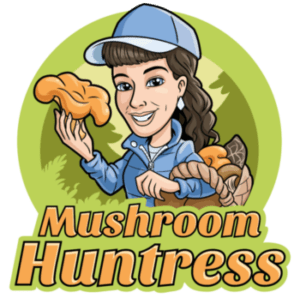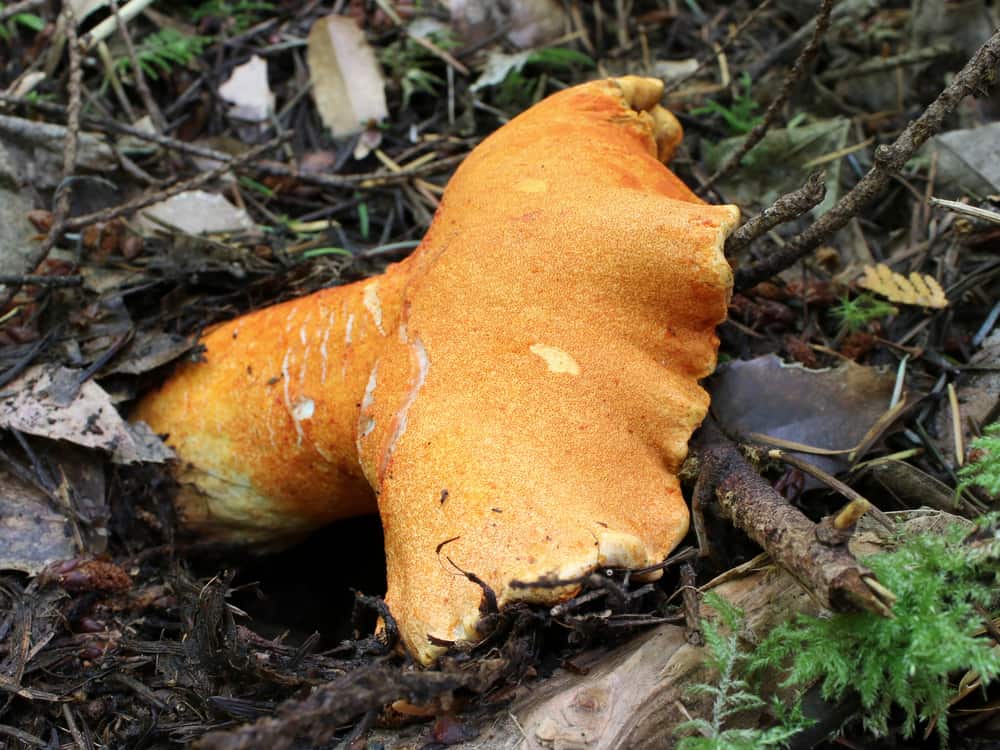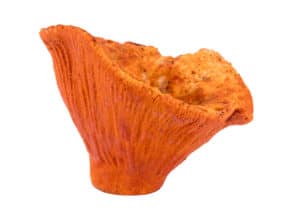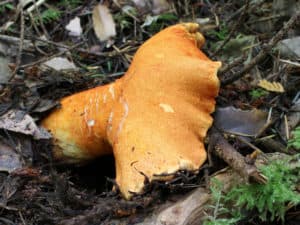All About Lobster Mushrooms
It sounds bizarre, a mushroom named lobster – what in the world can a mushroom and lobster have in common? Well, it turns out, a few things. To start, the color of this fungi (Hypomyces lactifluorum) is so intensely lobster red that it is extraordinary.
And, on top of that, it tastes eerily like lobster, especially when drenched in butter (the best way to eat it!). Don’t pass up this prized edible; it is well worth the hunt.
The strange behavior of the lobster mushroom
The lobster mushroom, though commonly referred to as a mushroom, isn’t actually one at all. It is a parasitic fungus that attacks other species of mushrooms, specifically Lactarius and Russula types.
During the process of parasitization, the host mushroom becomes entirely unidentifiable. In its place appears a dense, firm, fungi with the color of a cooked lobster shell.
While some Lactarius and Russula mushrooms are tasty edibles, those overtaken by the lobster fungus improve infinitely in taste.
Some people shun the lobster mushroom because it isn’t a true mushroom. To these purists, a parasitic fungus isn’t even considered a food option, never mind something that could taste good.
Sadly, they are missing out on one of the best-tasting mushrooms. But that’s okay, that means there is more for the rest of us.
Hunting the lobster of the woods
Look for lobster mushrooms anywhere you know Russula or Lactarius species to grow. This isn’t a promise the parasite is present and active in all Russula groupings, but it’s the best place to start.
You’ll know the lobster mushroom when you see it; the bright orange to rusty-red color is unmistakable. No other mushroom or fungi stands out so starkly on the forest floor.
Unlike morels and porcini, which blend in with their surroundings, lobsters practically call out to be seen.
The lobster mushroom doesn’t look like a regular mushroom. It doesn’t have gills, or a recognizable cap and stem, like the typical mushroom. It resembles a sulfur shelf mushroom, like chicken of the woods, but it grows in the ground, not on a tree.
As the host mushroom is parasitized, it creates nonuniform lumps and mounds, giving the fungus a lopsided, uneven appearance. Lobsters, on average, are 6-8” tall, but much larger ones aren’t uncommon. The surface of the lobster is covered in little pimply like dots, giving it a rough look.
If you see one, look for others. The parasite attacks groups, and most often, there are many around. They may hide under leaves or needles, so look carefully.
Lobster mushrooms generally appear in late summer through early fall in mixed hardwood and coniferous forests. Many foragers report finding them specifically around hemlocks, spruce, and firs.
Only harvest specimens that are firm and dense. If the mushroom is light, soft, brown, or smells strong, it is past prime. These are not worth picking. Leave them be, mark the spot, and try again next year. That’s right, once you find a place, there’s a good chance it will give you lobster mushrooms year after year.
Cooking with lobster mushrooms
Firm, dense, and meaty with a nutty, sweet, seafood-like flavor, the lobster mushroom is a treat to use in cooking. It holds up well, not reducing in size like what happens with most other mushrooms during the cooking process. The taste is generally mild but intensifies when combined with heat and fat.
Use lobster mushroom quickly after harvesting. They deteriorate quite fast, depending on what state of parasitization they were in when harvested. Any brown spots will quickly turn the entire mushroom into a rotten blob. The interior flesh should be all white and firm.
Lobster mushrooms, unfortunately, are difficult to clean. Dirt and ground matter get stuck in the cracks and crevices and basically become part of the mushroom. Do not wash this fungus – that removes the distinctive coloring.
Use a firm, dry toothbrush to scrub off the dirt. And, then, use a small knife to cut off any stubborn forest bits. Hemlock needles love to stick right on regardless of the scrubbing method.
Cook this mushroom simply, with oil or butter and garlic and herbs. It doesn’t need any fancy treatment. In fact, it is best when allowed to be the star of the dish. If you have an abundance of mushrooms, try them in a seafood stew or pasta dish in place of the sea-faring lobster.

Lobster mushroom recipes
Try some of these fantastic recipes to experience the versatility of lobster mushrooms.
Asparagus and Lobster Mushroom Risotto
Lobster Mushroom Infused Butter
Manhattan Lobster Mushroom Chowder
Corn Chowder with Lobster Mushroom






